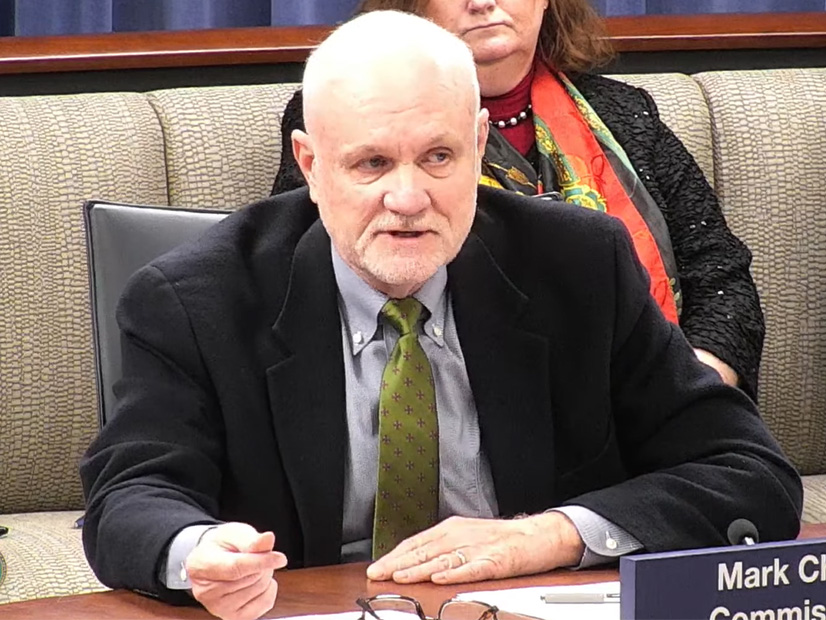
FERC on Thursday approved a Notice of Proposed Rulemaking that would pave the way for overriding state regulators’ rejections of certain transmission projects (RM22-7).
Congress originally gave FERC this backstop siting authority for transmission projects in Department of Energy-designated National Interest Transmission Corridors as part of the Energy Policy Act of 2005. But the 4th U.S. Circuit Court of Appeals ruled this only applied to those projects that state regulators did not act on, not to those that states denied (Piedmont Environmental Council v. FERC (2009)).
A provision in last year’s Infrastructure Investment and Jobs Act essentially overturned that ruling, expanding FERC’s backstop authority over state-rejected projects. The NOPR is intended to implement that provision.
“The NOPR clarifies the commission’s siting authority by expressly stating that the commission may issue a permit for the construction or modification of electric transmission facilities in DOE-designated national corridors if a state has denied an application to site transmission facilities,” Abigail Christoph, an attorney-adviser in the Office of General Counsel’s, said in a presentation at FERC’s open meeting Thursday.
 Abigail Christoph and Kim Smaczniak, of the FERC Office of General Counsel, and Enakpodia Agbedia, of FERC’s Office of Electric Reliability, brief FERC commissioners on the NOPR. | FERC
Abigail Christoph and Kim Smaczniak, of the FERC Office of General Counsel, and Enakpodia Agbedia, of FERC’s Office of Electric Reliability, brief FERC commissioners on the NOPR. | FERC
It would also allow developers to begin prefiling proceedings for their projects with FERC while its state applications are pending, instead of waiting for one year after they submit them.
“This change will allow applicants to simultaneously pursue approval before a state and the commission if they so choose,” Christoph said.
Transmission wonks generally consider federal backstop siting authority necessary for building large, interregional projects, as just one state can unilaterally kill a multistate project if it rejects its developer’s application. It is a deeply unpopular concept with state regulators, however.
FERC acknowledged this in the NOPR by proposing several rule changes aimed at ensuring a thorough process if a developer requests that it override a state’s rejection.
The commission would create a new applicant “code of conduct” for how potential permit holders engage with landowners. It would also require three “resource reports” be included in applications: on environmental justice, tribal resources, and air quality and environmental noise.
Republicans Tentatively Approve
All five FERC commissioners voted to approve the NOPR, but they didn’t agree on whether it will actually help build out any transmission projects.
“Infrastructure is extremely difficult to site in the United States,” Chair Richard Glick said. “It’s something that, as a country, we need to come to grasp with, especially in regards to transmission. … We have to get it done as a country, and I think this is a step in the right direction.”
Fellow Democratic Commissioner Allison Clements pointed to the provisions that add new requirements for engaging with landowners and other stakeholders as helpful to getting projects done and avoiding litigation.
“It’s really hard to build infrastructure because that impacts people. So let’s find ways to bring people into the conversation early on and get satisfactory outcomes,” she said.
But Republican Commissioner Mark Christie challenged both the premise of the new rules — that states are blocking transmission buildout in a meaningful way — and their function.
“This narrative that’s being pushed — that the states are standing in the way of critically needed infrastructure — is a false narrative,” Christie said.
He noted that the transmission rate base around the country has almost tripled in the last 10 years.
“The states are not standing in the way of critically needed transmission projects. The states are by and large approving them. If the states need anything, they need more authority to vet projects, not less,” he said.
Christie also said the rule changes would not be a “magic bullet” that results in more transmission. Instead, he said, they would create multiple lines of attack for litigation opposing new transmission lines.
“The first time FERC overturns a state after the state has said ‘no,’ once the state has held its own formal process and said ‘no’ either on the route or the need or the prudence of cost … that’s going to be litigated 16 ways from Sunday,” he said.
Still, Christie said he would approve the NOPR, though he said he wanted to hear from state regulators and consumer advocates.
“I question the purpose of fidelity to the IIJA in a NOPR that has what I think in many cases are unnecessarily burdensome requirements, but … I solicit comments on that,” Commissioner James Danly said.


